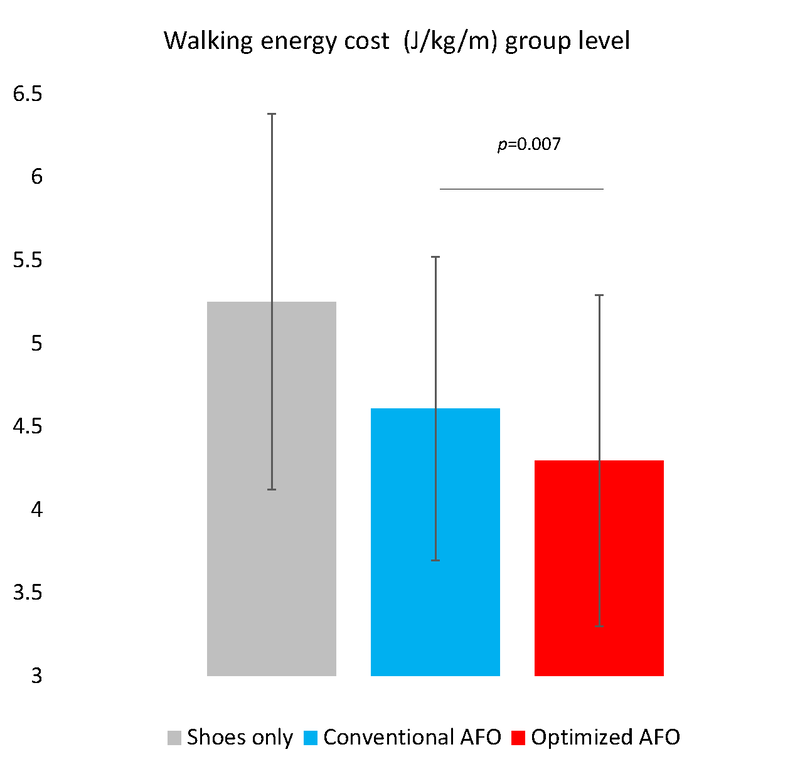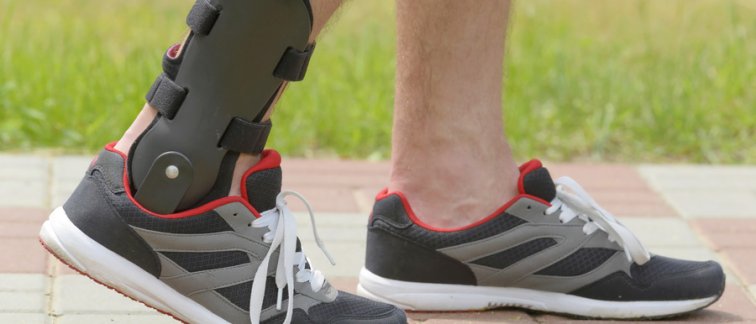Increased walking energy cost and falls are common walking problems in persons with calf muscle weakness. Ankle-foot-orthoses (AFOs) enable people with calf muscle weakness to prevent falls by providing stability (walk more safely) and to increase their walking radius by lowering walking energy cost (walk more efficiently).
In clinical practice, provided AFOs for calf muscle weakness usually lower the walking energy cost, but the effect size is generally small. In the PROOF-AFO study, we demonstrated that the effectiveness of AFOs to enhance walking performance can be greatly improved when the stiffness is individually optimized.
In this study, individually optimizing the bending stiffness of an AFO doubled the effect on walking energy cost reduction (-20%) compared to clinically prescribed AFOs (-10%).
Furthermore, it significantly improved walking speed and walking satisfaction and reduced perceived fatigue (Waterval et al 2020). It is therefore recommended that to achieve the best walking performance, AFO optimization is required and should therefore be implemented in clinical practice.

To facilitate implementation in clinical practice, we recommend the following future directions:
- The development (and validation) of a simulation framework to predict the optimal AFO stiffness (i.e. a precision orthotics framework) in people with calf muscle weakness, for which we recently were awarded a ZonMw IMDI grant;
- Secondly, the focus is on designing a novel wearable AFO of which the stiffness can be altered in real-time to allow time-efficient optimization procedures.

